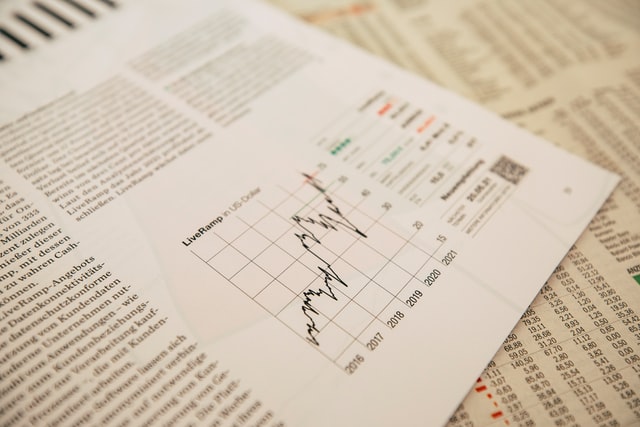Do you want to learn how to analyze stocks like a pro? If so, you have come to the right place! In this blog post, we will discuss everything you need to know about stock analysis. We will cover topics such as financial ratios, trend analysis, and price momentum. By the end of this article, you will be able to make informed investment decisions and increase your chances of earning a profit on the stock market!
1. What is a stock and what does it represent?
A stock is a share in the ownership of a company. When you buy a stock, you become a part owner of that company. Stocks represent an important source of capital for companies and play a key role in the economy.

The owner of the stock has an ownership interest in the corporation, which gives them certain rights including voting privileges at annual meetings and receiving dividends (if any).
You can make money on stocks in two ways: when they go up or down in price. If you bought 100 shares of Company XZY for $50 per share and the price goes up to $60 per share, you would make a profit of $1000 (100 shares x $60 – 100 shares x $50). If the price went down to $40 per share, you would lose $1000 (100 shares x $40 – 100 shares x $50).
Stocks can be bought and sold on the stock market. The most popular way to do this is through a broker, but some people prefer trading online or using an investment app.
2. How do you read a stock chart to analyze price movement and trends?
A stock chart is a graphical representation of the price movement of a stock over time. It can be used to identify trends, support and resistance levels, and other important information about the stock.
There are many different types of stock charts, but the most common ones are line charts, bar charts, and candlestick charts.
Line Charts
A line chart is a simple chart that shows the closing price of a stock over time. It plots a line connecting the closing prices for each day. This type of chart is good for identifying trends and moving averages.
Bar Charts
A bar chart is similar to a line chart, but it shows the high, low, and opening prices for each day in addition to the closing price. It is good for identifying support and resistance levels.
Candlestick Charts
A candlestick chart shows the same information as a bar chart, but with additional visual aids that make it easier to interpret. It plots four lines connecting the high, low, open, and close prices for each day.
The color of the line connecting the high and low prices is green if it closes higher than its opening price, and red if it closes lower than its opening price. The bottom of the line connecting those two points is called a wick. A long wick may indicate that there was strong buying or selling pressure during that trading day. The candle body is the area between the wicks, and it is either green or red depending on whether the close was higher or lower than the open.
When analyzing a stock chart, you should look for trends in the price movement. A trend is defined as a series of highs and lows that are moving in the same direction. You can use the trend to identify possible entry and exit points.
You should also look for support and resistance levels. Support is a price level where buyers are believed to enter the market, pushing the price up. Resistance is a price level where sellers are believed to enter the market, pushing the price down. These levels can be used to trade reversals or breakouts.
3. What are some common indicators used to predict future stock prices movements?

There are many different indicators that can be used to predict future stock prices movements. Some of the most popular ones include:
- Moving averages: You can also use moving averages to identify trends, support and resistance levels, and other patterns in the price movement of a stock. A moving average is an indicator that calculates the average price over a given period of time (e.g., 20 days). You can plot several moving averages on a chart with different periods to gauge the strength of a trend or determine when to enter and exit trades.
- MACD (moving average convergence divergence): The MACD is a momentum indicator that measures the difference between two moving averages. It is used to identify bullish and bearish divergences, which can be used to predict future price movements.
- RSI (relative strength index): The RSI is another momentum indicator that measures the ratio of up-to-down closes over a given period of time. It indicates whether a stock is overbought or oversold, and it can be used to predict future price movements.
- Stochastic oscillator: The stochastic oscillator measures the relationship between a stock’s current closing price and its high-low range for the past n periods (e.g., 14 days). It is used to identify overbought and oversold levels, which can be used to predict future price movements.
- Bollinger bands: Bollinger Bands are lines plotted two standard deviations above and below a moving average of the stock’s closing prices. They indicate when a stock has moved further away from its mean price than normal, indicating a potential reversal.
Each of these indicators has its own unique characteristics and can be used to generate trading signals. You should become familiar with them and learn how to use them effectively before attempting to trade stocks.
When analyzing a stock, it is important to consider all of the information that is available. This includes looking at the chart, understanding the trend, identifying support and resistance levels, and using indicators to predict future price movements.
You should also look at the company’s fundamentals before making an investment decision. This includes things like earnings per share, revenue growth rate, debt to equity ratio, and so on.
It is important to remember that stock prices are driven by many different factors including supply and demand in the market as well as investor sentiment about the company. There is no one indicator that can predict future stock prices with 100% accuracy, so it is important to use multiple indicators and analysis techniques to make informed decisions.
Well, we’ve come to the end of this blog post and I hope you’ve learned a lot about stocks. Stay tuned for more updates and tips!

Leave a Reply